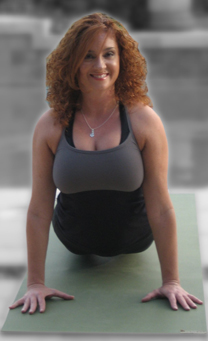Frequently Asked Questions:What should I bring to class? Your yoga mat, if you have one, and a bottle of water, and maybe a hand towel if your gym/studio doesn't supply them. It's a good idea to purchase your own mat as a way of "owning" your practice. If you're new to yoga, you can purchase an inexpensive mat at Target or any other discount store (look for one that's at least 1/4" thick), but just know that there is a break-in period to these mats and they will be a little slippery at first (another reason to be consistent in your pratice - to break in your mat!). A nice way to reward yourself for being consistent with your ongoing yoga practice is to upgrade your mat to something like these which will be a lot more comfortable and less slippery (but pricey!). If you just want to try a class without having to purchase a mat, there will be mats available to borrow. What should I wear to class? Any type of of athletic clothing that allows for freedom of movement is fine. A fitted top or one that can be tucked into your shorts or pants is best during downward dog & inversions. And wear your flip flops! We practice yoga in bare feet. Should I eat before or after class? It is best to give yourself at least two hours after eating before taking a yoga class. We do a lot of twisting that is great for the digestive tract, but doesn't feel so great on a full stomach. I've regretably tested this rule of thumb on myself...let's just say yoga on a full stomach is not comfortable :) What should I do if I feel myself start to cry in class? First of all, please know that it is perfectly normal to experience an emotional release during a yoga class. In fact, by their very nature, yoga poses are designed to release pent-up tension...crying is just one way the body lets go. Consider this to be just one of the many gifts of your yoga practice rather than something to be embarassed about. Refocussing your attention on your breath can help to calm and center you. What should I do if a pose really hurts? I've heard yoga described as finding comfort in uncomfortable positions, but it's important to recognize the difference between being uncomfortable and being in pain. If a pose is truly painful, it's best to come out of the pose and ask for a modification, either during or after class. Not all poses are meant for every body, but modifications can make them safe for (almost!) all. Most importantly, honor your body! It's often said that a teacher can always spot the experienced yogi because she is the one who takes breaks when she needs them, rather than waiting for the teacher to offer them. |
 |
